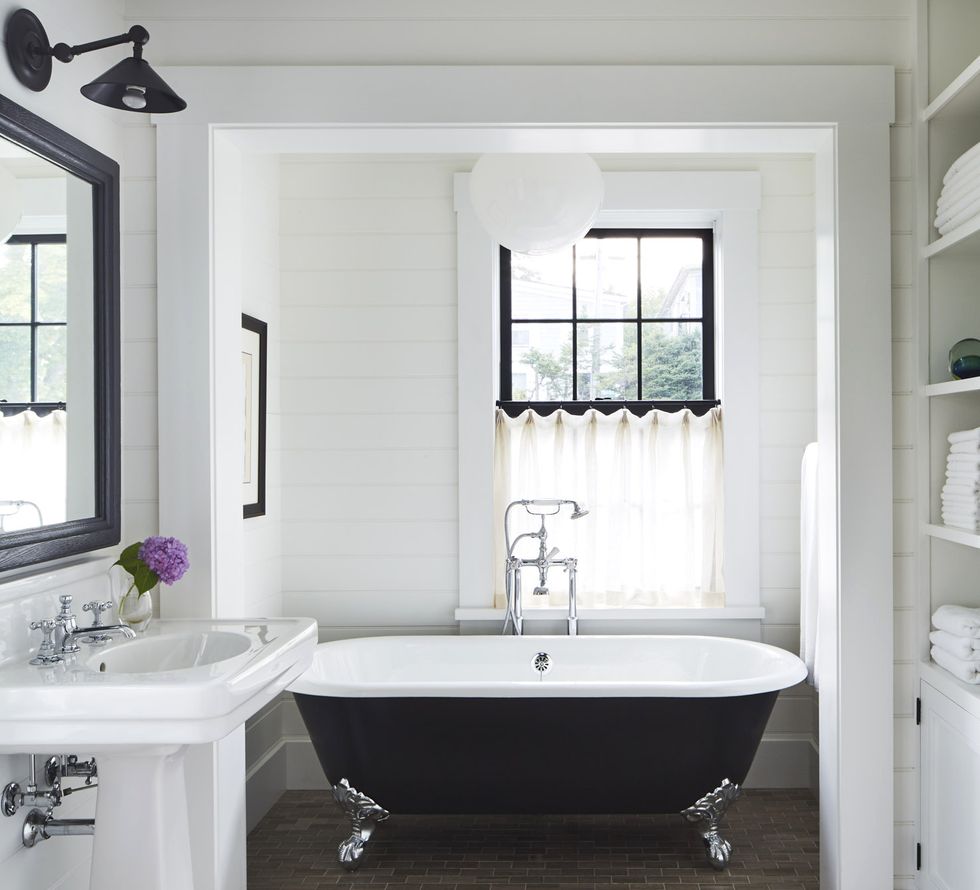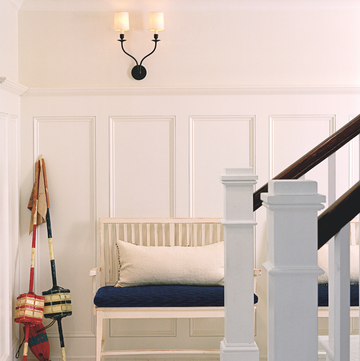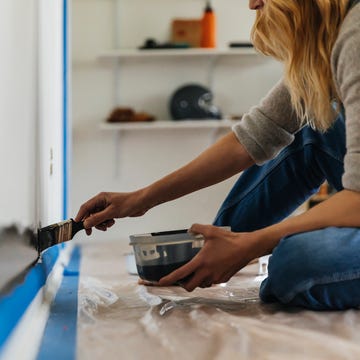When it comes to renovating a bathroom, you may be tempted just to scrap it all and start anew. After all, nothing says relaxation less than soaking in a dinghy, waterstained old tub—and that’s not exactly the aesthetic foot you want to put forward when you’re spending all sorts of money transforming the rest of your space. Still, there’s an at-home solution you can undertake that will save you money and still deliver on the sparkly new bathroom design you’ve seen in your Pinterest fever dreams: refinishing your bathtub.
Refinishing your bathtub may sound like something better left to the pros, but it’s actually a surprisingly easy project for weekend DIY warriors to undertake. Refinishing a bathtub typically involves using a DIY kit (available at many hardware stores) to cover an existing enamel, acrylic, or fiberglass tub surface with a new hard epoxy coating that will extend its life and repair any small issues, like cracks or rust. Below, we’re walking you through the step-by-step process for refinishing a bathtub, including materials, safety considerations, and more.
You'll need:
- Strong tub cleaner or bleach
- Sponge/bristle brush
- Stainless steel caulk remover/blade
- Bathtub refinishing kit
- 400-grit wet/dry sandpaper
- Rubber gloves
- Mask
- Foam paint roller and foam brush
- Tub and tile silicone caulk and caulk gun
- Painter's tape
- Drop cloths
Before You Start...
When it comes to refinishing your tub, starting out with the right protection is key—for both you and your bathroom. The chemicals needed to properly recondition the surface of your bath can be harsh, so it’s important to protect yourself accordingly with a mask, gloves, and proper air ventilation in your workspace. Likewise, the epoxy used to refinish your bathtub can be very difficult to remove from unwanted areas, so make sure to safeguard any nearby tile backsplash or floors with construction paper or drop cloths ahead of beginning your project.
Step 1: Remove Tub Hardware
Begin by shutting off the water supply to your tub, then gently remove any fixtures or finishes in the surrounding area, including drain covers, bathtub spouts, and more.
Step 2: Scrape Away Old Caulk
Refinishing your tub is a great opportunity to also safeguard its performance for years to come. One surefire way to do so? Replacing the existing caulk. To remove what is currently in place, use a stainless steel caulk scraper or blade to gently loosen the caulk from the surface of your tub and peel it away. In tougher instances, you can also rely on a chemical remover if necessary.
Step 3: Deep Clean the Bathtub
In order to get the best finish possible on your bathtub, you’re going to want to start the refinishing process with a squeaky-clean surface. Using bleach or another abrasive cleaner, thoroughly clean your tub and the surrounding area, paying special attention to any cracks, crevices, or joints where mold and mildew could reside. Rinse your tub clean and dry well with a towel.
Step 4: Rough Up the Bathtub Surface
If you’re working with a bathtub refinishing kit (and we suggest you do for ease and brevity's sake!), many come with an etching powder, and now is the time to break it out. This will make quick work of whatever glaze still exists on your tub’s surface, allowing the new finish to adhere more smoothly. Apply the etching powder according to package instructions, which usually involves adding water and scrubbing with an abrasive pad. Rinse the tub well again once finished.
Step 5: Sand the Bathtub
To further prep the surface for its new coating, you’re going to want to rough up your tub yet again, this time using 400-grit wet/dry sandpaper. Make sure to take undertake this step thoroughly, as it will have a direct impact on how your finished product looks. If your chosen refinishing kit didn’t have an etching powder included, you will need to spend even more time wearing down the surface of your tub through sanding. Once complete, rinse the tub again and dry well with paper towels.
Step 6: Prime the Surface
Many bathtub refinishing kits come with a primer that should be applied to the surface before the epoxy. If that is the case with your chosen kit, you can apply the primer now using a foam roller and foam brush. If your kit did not include a primer, chances are it’s because the refinisher included is self-priming and this step is therefore unnecessary.
Step 7: Mix and Apply the Epoxy Coating
Your bathtub refinishing kit will come with two items that need combining at this stage: an epoxy resin and a hardener. Mix the two according to label instructions, while also taking note of the “working time” or “open time” of your kit (aka how long you have until the epoxy hardens). Working quickly, apply the coating to the bathtub surface, completing the whole tub in one session. Apply a second coat according to package instructions, then allow the tub to dry and cure for at least two to three days.
Step 8: Caulk and Reinstall Hardware
The time has come for the finishing touches, which will bring your DIY bathtub refinishing project to a very satisfying conclusion. Start by sealing the tub joints (where it intersects with the walls, floor, or tile) with silicone caulk and allow it to cure overnight. Reinstall your hardware (or spring for new shiny stuff!) and you are ready for the most steamy, well-earned bath ever.
Follow House Beautiful on Instagram.















